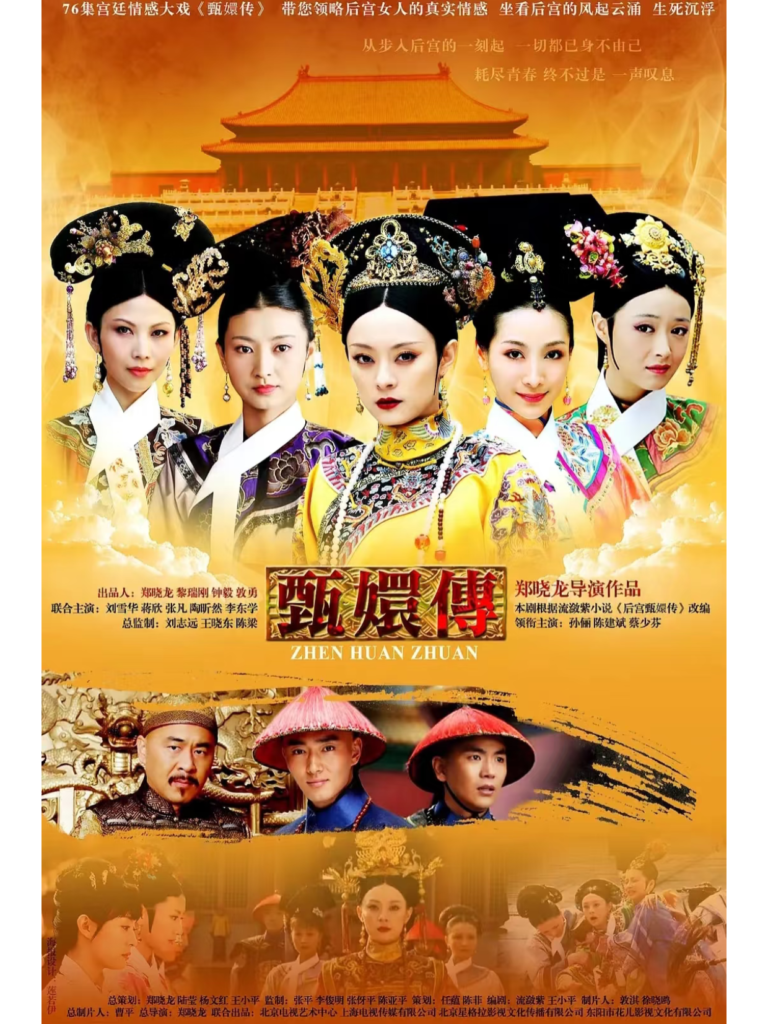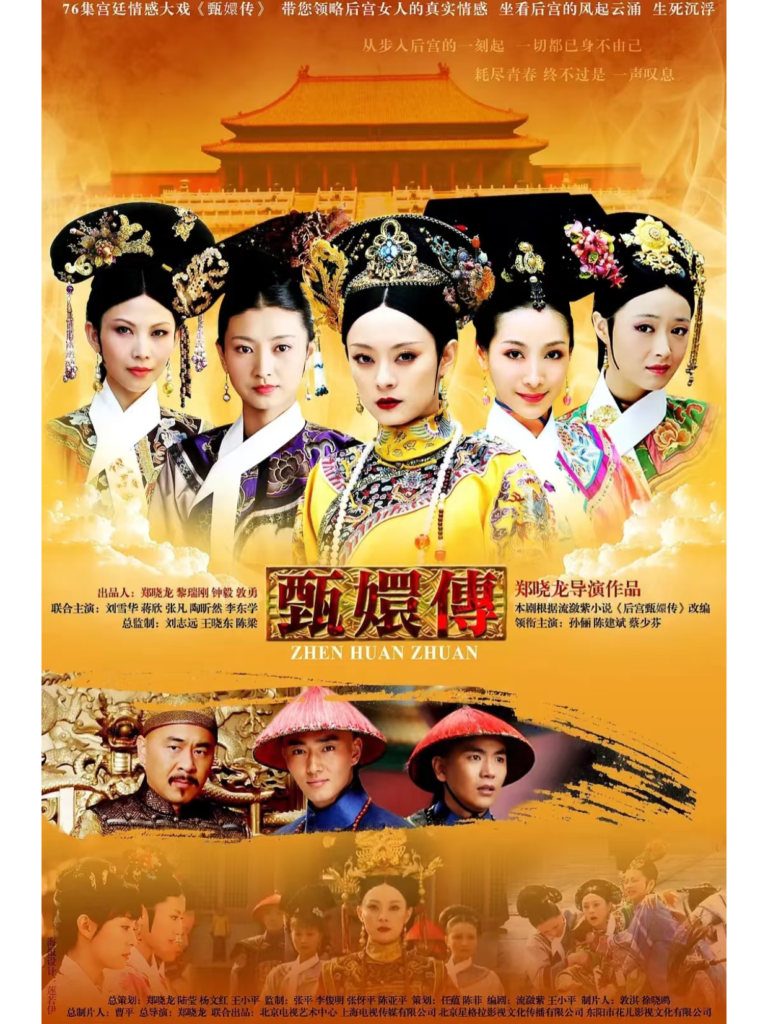
The Legend of Zhen Huan, also known as Empresses in the Palace, is one of the most celebrated Chinese historical dramas in recent years. With its intricate storytelling and carefully crafted characters, it transports viewers into the heart of the Qing Dynasty court. Yet behind the lavish costumes and dramatic intrigues lies an important question: who were the real-life prototypes of these concubines, and how closely does fiction follow history?
While some characters draw clear inspiration from historical figures, others are reimagined or entirely fictional. Understanding the prototypes allows us to appreciate how the series balances authenticity with creative narrative.
Main Prototypes of Key Concubines
Zhen Huan (甄嬛)
The heroine Zhen Huan is based on Empress Dowager Chongqing, also known as Empress Xiaoshengxian of the Niohuru clan. A member of one of the Eight Great Manchu Clans, she entered the household of Prince Yong at the age of thirteen as a low-ranking concubine. Through her care during his illness, she won his lasting trust. Later, she gave birth to the future Qianlong Emperor.
When Yongzheng ascended the throne, she was elevated from Consort Xi to Noble Consort, and after her son’s enthronement, she became the revered Empress Dowager. The series dramatizes her journey of resilience and survival, echoing her historical rise from modest beginnings to the most honored position in the imperial family.
Consort Hua (华妃)
Consort Hua reflects Imperial Noble Consort Dunsu of the Nian clan, sister of the famous general Nian Gengyao. She was granted to Prince Yong as a side consort during Emperor Kangxi’s reign. After Yongzheng’s succession, she was promoted and entrusted with managing the imperial harem, holding power second only to the empress.
In history, she enjoyed Yongzheng’s deep favor but fell victim to her brother’s political downfall. Although she lost influence, she was later posthumously honored. The series intensifies her pride and fiery temper, shaping her into one of the most memorable characters.
Shen Meizhuang (沈眉庄)
The gentle and intelligent Shen Meizhuang is drawn from Consort Qian of the Liu clan. She entered the palace in Yongzheng’s seventh year and later gave birth to Prince Hongyan. Historically, she lived a respected but less dramatic life.
In the drama, Shen Meizhuang’s fate is rewritten—her loyalty, disillusionment, and tragic death from childbirth deepen her character and strengthen her role as Zhen Huan’s closest companion.
An Lingrong (安陵容)
An Lingrong originates from Imperial Concubine An, though records about her remain sparse. Her humble background is retained, but the series greatly expands her story. On screen, she begins as a fragile yet kind figure, only to turn ambitious and manipulative in her quest for survival. This blend of fact and fiction transforms her into a fully developed tragic character, highlighting the brutal choices faced by women in the palace.
Consort Qi (齐妃)
Consort Qi is based on Consort Qi of the Li clan, daughter of Li Wenye, a provincial governor. She entered Prince Yong’s residence before his enthronement and later became Consort Qi after his ascension.
In the series, her simplicity and lack of wisdom make her easily manipulated. She eventually falls from favor after her son’s misfortunes, leading to despair. While dramatized, her storyline reflects the precariousness of a mother’s status tied to her child’s fate.
Empress Ula-Nara Yixiu (乌拉那拉·宜修)
The empress in the drama corresponds to Empress Xiaojingxian of the Ula-Nara clan, Yongzheng’s primary wife. Historically, she was known for her virtue, gentleness, and grace. She was given to Prince Yong as his principal consort by Emperor Kangxi and later honored as empress.
The drama, however, portrays her as ruthless and manipulative, in stark contrast to her historical reputation. This creative choice heightens palace conflict, though it distances her character from the real empress’s dignified image.
Lady Qi Guiren (祺贵人 瓜尔佳氏)
Lady Qi Guiren is linked to a concubine from the Gua’erjia clan, daughter of Shi Wenbing. Historical records are minimal, but her noble Manchu heritage is clear. In the drama, her arrogance and willfulness are emphasized, offering dramatic tension absent in historical texts.
Consort Duan (端妃)
Consort Duan resembles Imperial Noble Consort Chunyi of the Geng clan, who began as a servant in Prince Yong’s household and later became a favored consort. She lived to an advanced age, respected by both Yongzheng and Qianlong.
In contrast, the drama presents her as frail and neglected, shaping her into a sympathetic figure who survives through quiet endurance rather than political power.
Consort Jing (敬妃)
Consort Jing’s prototype is debated. Some link her to Consort Qian of the Liu clan, while others suggest she may have drawn inspiration from a lesser consort, such as Ma Changzai. In the drama, she embodies loyalty and kindness, raising Zhen Huan’s daughter and ultimately achieving peace in old age.
Characters of Artistic Creation or Adaptation
Not all characters have direct historical prototypes. Some were invented or reshaped to serve the story’s themes.
- Ye Lanyi: Inspired loosely by Consort Ning (Wu clan), but most of her narrative—her equestrian skills, her aloof nature, and her love for Prince Guo—are fictional.
- Huanbi: Entirely fictional. She is Zhen Huan’s half-sister and later becomes Prince Guo’s concubine, offering a subplot of love and loyalty.
- Liuzhu: A loyal maid created for the drama, remembered for her sacrifice in saving her mistress.
- An Lingrong: Though based on a real figure, much of her character arc—her transformation and tragic end—is a dramatized creation.
Conclusion
The Legend of Zhen Huan masterfully weaves together history and fiction. Some concubines, such as Zhen Huan and Consort Hua, remain close to their historical prototypes, while others, like Empress Ula-Nara or Shen Meizhuang, are reshaped for dramatic effect. Still others, such as Huanbi and Liuzhu, exist only in the realm of imagination.
By blending authentic lineage with artistic invention, the series creates a vivid tapestry of court life—both grounded in the realities of Qing history and elevated through narrative artistry. It is precisely this balance that makes the story enduring: a reflection on the women who lived in history, and the creative voices who give them new life on screen.
